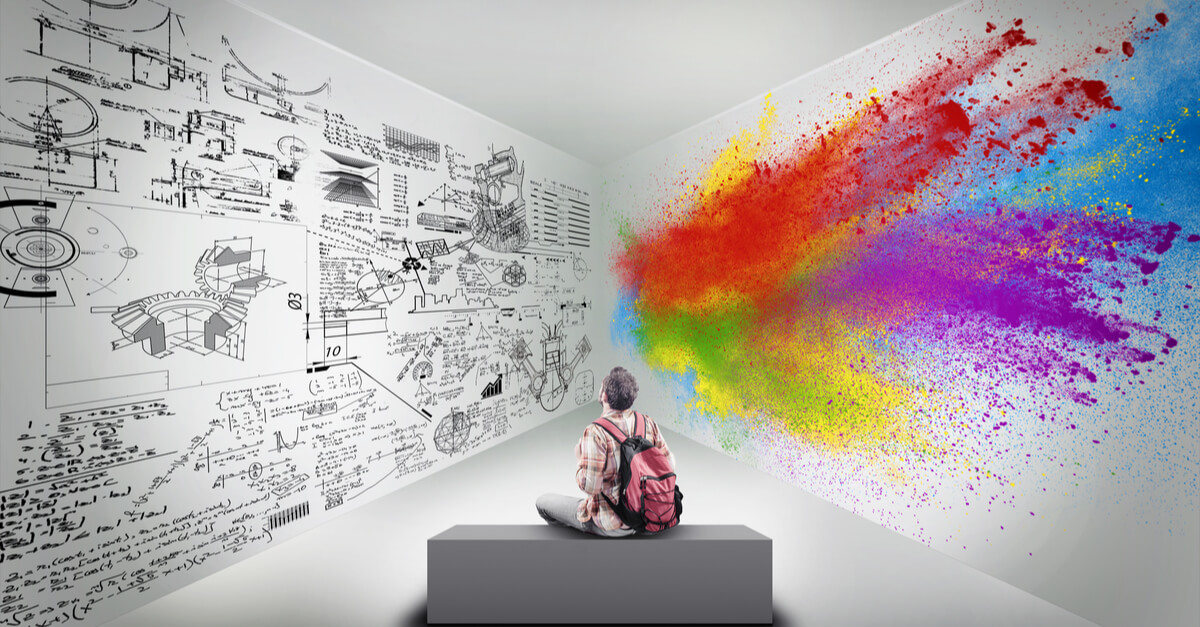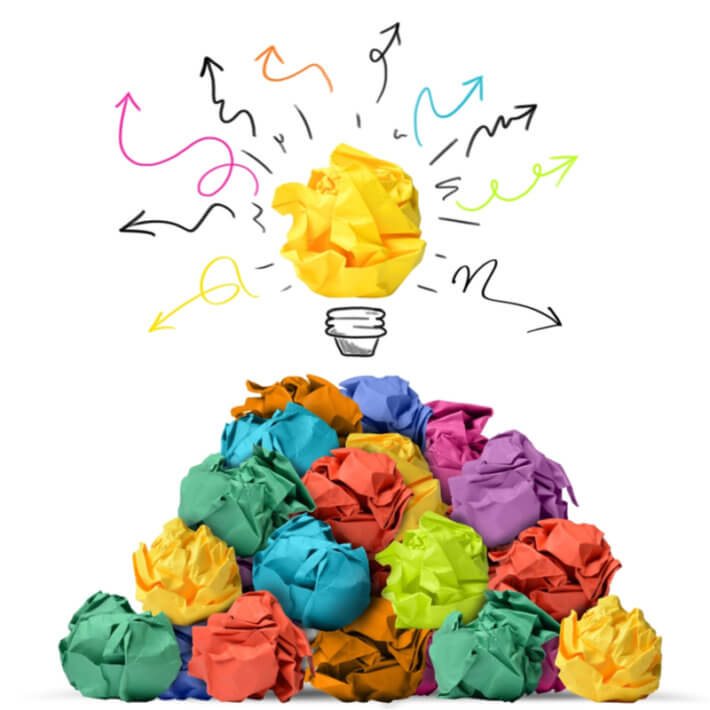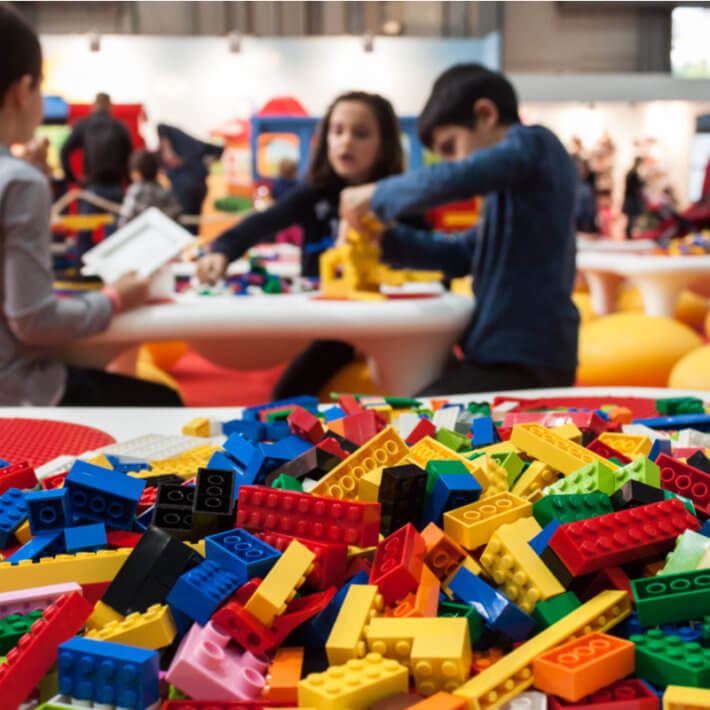Idea Generation: 12 Rules to Ensure High-Impact Ideas

What is idea generation?
Idea generation is the process of generating and selecting ideas to solve discrete problems. However, within the context of new product development, the goal of idea generation is to solve customer problems.
After all, every new product begins as an idea. Therefore, if there’s an innovation job that we’d better do well, it’s idea generation. And yet, this concept of “idea generation” can seem like just another fuzzy bit in the fuzzy front end. After all, what’s with all the facilitators? The Nerf guns and pipe cleaners? Is this something for adults? Or for children? Or maybe for both? How far is too far?
Instead, should we think of idea generation as something more serious? A business process? In fact, “yes.” We should. In the least, that’s a good start.
Idea generation as a process
In fact, idea generation is a process. A formal process to create ideas. It has two phases, divergence and convergence. The divergent phase is when we defer judgment. This is when “all ideas are good ideas.” The second, the convergent phase, is when we apply judgment. During convergence, we select the best ideas to advance.
How do we get the most from Design Thinking? Click here to learn more!
Why is idea generation confusing?
Confusion persists because multiple things are true at once. Yes, it’s a serious business process. On the other hand, it’s also true that elements of play boost creativity. And certainly, live at either extreme. If not careful, Nerf guns and pipe cleaners can become distractions. However, even worse, idea generation can be too serious. Crushing participant enthusiasm and output. The best results will come from keeping these spirits in balance. Let’s look at 12 rules for effective idea generation.
12 Rules for High Impact Idea Generation
1. Idea generation begins with a well-defined problem
Let’s start with what’s most important, a well-defined problem. Without one, our ideas will be unrestrained. Scattershot. With too much left to chance. It will surely be difficult to hit a target without taking aim.
Besides, when you craft a problem statement, it inspires creativity and thinking. When the brain receives a problem, it begins solving. We cannot even shut this off easily.
Click here to learn how “Voice of the Customer” Tools help define customer problems
ENSURE YOU’RE AT THE RIGHT PROBLEM LEVEL
When defining the problem, begin by ensuring you’re at the right problem level. To accomplish this, Dr. Min Basadur created the “Why? / What’s stopping?” method. The question “Why” reveals a broader problem. Meanwhile, the question, “What’s stopping you?” points to a narrower one.

For example, imagine that your company builds office chairs. Initially, the team believes the problem to be “Customers are not comfortable while working in an office chair.” When asking “What’s stopping customers from being comfortable while working in an office chair?”, perhaps you get narrower problem statements such as:
Customers…
- Are not setting the lumbar support correctly
- Are sitting in the chairs too long
- Find the chairs are too confining
- Etc.
If addressing one of these narrow problems, then our main problem statement might be, “How might we ensure that customers are setting the lumbar support correctly?”
GOING BROADER
However, we should also explore broader problem statements. To do so, we ask a “Why” question. For example, “Why do customers want to be comfortable while working in an office chair?” This question yields broader issues. For example:
Customers want to be…
- More productive while working in office chairs
- Pain-free while working in office chairs
- Able to work for longer hours at a time in an office chair
- Etc.
BEGIN THE PROBLEM STATEMENT WITH “HOW MIGHT WE?”
From here, our new problem statement might be, “How might we help customers to be more productive while working in office chairs?”
Notice the difference between these two problem statements, one broad and the other narrow:
- (Broad) How might we help customers to be more productive while working in office chairs?
- (Narrow) How might we ensure that customers are setting the lumbar support correctly?
Which is best? Of course, this depends on your goals. Regardless, spend time to arrive at the “right” level. Don’t proceed until you have a problem statement that works. Your best idea generation is dependent upon this.
Additionally, it’s important to have customer insight as to the basis for a problem. Process-wise, idea generation should occur after voice of the customer activities. Proper voice of the customer tools are invaluable for this analysis.
2. Effective idea generation requires divergence and convergence
Idea generation requires divergence and convergence. While brainstorming experts know these terms, others may not. However, there’s no reason to be put off by the terminology. Whether or not you’ve heard of the words, you’re familiar with their meaning.

Consider a common scenario. You’re sitting down at a restaurant. Reading the menu. Your mission is simple: select your lunch. You actually do begin with a divergence phase. In which, you’ll determine a large set of good options. Next, you “converge” by selecting your lunch.
DIVERGENCE IS ABOUT EXPANSION
Divergence is about expansion. It’s about going wider. Determining all the possibilities. During divergence, we reserve judgment. We cast the net wide. Nothing is excluded. According to Dan Adams, founder of AIM, “divergence is about avoiding errors of omission.”
That is, if we are to arrive at the best idea, we first need to create a large list of options. By making it large, we improve the odds of making sure that somewhere in there… we have a great idea. Essentially, we ensure we have the best quality ideas by forcing a high quantity of ideas. Quality through quantity.
Click here to learn how “Voice of the Customer” Tools help define customer problems
Perhaps in a previous brainstorming experience, you heard a facilitator say that “all ideas are good ideas.” This is the essence of divergence. “Reserving judgment” means that within our idea generation, that we encourage participants to add new ideas and build upon others. We encourage them to do so without the spectre of judgment. Without fear of intimidation or ridicule.
CONVERGENCE IS ABOUT JUDGMENT
Of course, eventually, we ultimately will apply judgment. This is convergence. When describing convergence, Adams explains that the purpose is to “avoid errors of commission.” That is, we avoid selecting a sub-optimal idea.
Consequently, we divide idea generation into two phases: divergence (in which we reserve judgment, and generate many ideas) and convergence (in which we apply judgment, and select the best ones).
3. Create a list of killer phrases
During the divergent phase of idea generation, we must fully commit to reserving judgment. In practice, participants may apply “judgment” in subtle ways. All too often, they may not understand how this restricts creativity.
For example, when a new idea is offered, someone might say:
- We tried that last year.
- That’s really the same as our current product.
- Our competitors gave that a whirl. Didn’t go well.
- That might be hard to pull off.
- It could take a long time to figure that one out.
- It’s a good idea, but...
These are examples of “killer phrases.” Killer phrases are loaded with judgment. If allowed during divergence, they kill the spirit of idea generation.

Dr. Basadur recommends posting a list of killer phrases on the wall. Phrases that are banned during divergence. Here are other examples:
- Too hard to administer
- We’ve been doing this a long time, and it works as is.
- It’s ahead of its time
- Let’s sit on it for a while.
- It’s not budgeted.
- Sounds complicated.
- We should be more practical.
- We really haven’t tried anything like that.
You get the idea. It turns out that divergence is a skill itself. Convergence is as well. And interestingly, we have different problem-solving styles. Based on these, some prefer divergence while others prefer convergence. As we’ll discuss later, the ideal team will have a mix of both.
4. Know your problem-solving style for idea generation
Additionally, it’s important to understand that people have different problem-solving styles. The Kirton Adaption-Innovation (KAI) Inventory is one way to measure this cognitive preference.
THE ADAPTOR PREFERENCE
At the ends of this continuum, there are “Adaptors” and “Innovators.” High Adaptors prefer structure, rules, and group cohesion. When solving problems, they are attached to current rules and standards. Therefore, high adaptors will be better at idea generation when it’s important to stay within the bounds of current paradigms.
THE INNOVATOR PREFERENCE
On the other hand, high Innovators are less likely to reference structures and rules. Additionally, they are quite comfortable disrupting group cohesion. They naturally challenge everything. Everything from conventions, paradigms, and even authorities. High innovators will excel at idea generation when problem-solving requires going beyond acceptable structures, rules, conventions, or even, what appears to be possible.
Under Kirton-Adaption Theory, both styles can be equally creative. It’s just that innovators are better at solving innovative problems when current structures are an impediment to progress. And adaptors are better at solving adaptive problems when it’s best to stay within current structures.
Of course, these descriptions of “High Adaptor” and “High Innovator” describe the extreme differences. In reality, by definition, most folks are in the heart of the bell curve, with milder adaptive or innovative preferences.
If you’re interested in learning your individual KAI profile, contact us at AIM, as we have the credentials to provide these assessments. For more about KAI, visit www.kaicentre.com.
5. Idea generation benefits from diversity
If we know that some have different problem-solving styles, there’s a logical consequence. We should seek diversity for our idea generation teams. That is, we should have a mix of “Adaptors” and “Innovators.”

However, that’s just the beginning. For the best idea generation, assemble many elements of diversity. For example, consider the following dimensions:
- Problem-solving style (adaptive, innovative)
- Introversion vs extroversion
- Proximity to the problem (close, direct, indirect)
- Technical expertise
- Industry experience (deep in one vs. cross-section of many)
- Educational background
- Etc.
HOW DOES DIVERSITY CONTRIBUTE?
During divergence, the diversity of styles and backgrounds will produce more varied ideas. Later, during convergence, technical experts and adaptive problem-solvers will be well-suited to select the best ideas to move forward.
Further, as part of this intentional strategy, every idea generation team should have at least one person who knows absolutely nothing about the problem. They will not be as burdened by implicit assumptions.
6. Use an outside idea generation facilitator
Even though we imagine idea generation to include Nerf guns and pipe cleaners, it’s actually hard work. Also, more often than not, participants will have strong opinions. And as we’ve already discussed, there’s a structure and flow to the best idea generation sessions.
For these reasons and more, you’ll get the best results when using an outside idea generation facilitator. These folks will ensure adherence to a good process. Also, they’ll play “traffic cop,” to keep the strong, extroverted personalities from dominating the conversation. Also, the idea generation facilitator will politely admonish violators of the killer phrase policy. Otherwise, this can be difficult to do with colleagues.
With a talented idea generation facilitator, participants can relax in the process. They’re free to be productive team members. Further, instead of wasting their creative energy fighting with others, they can focus on the problem at hand.
7. Allow idea generation to be playful
Toys at work? Seriously? Well, let’s think about it. If we can put our egos aside, just for a few hours, they can inspire creativity. They provide inspiration to tap into our most natural, and perhaps oldest, problem-solving selves.
Everyone can recall something from their childhood when their backyard was a western cowboy town, Sherwood Forest, or the desert planet of Tatooine. Children are inherently creative in establishing the rules of a new world and then solving problems within it.
But is it actually possible to revitalize this childhood super-power for modern, more “serious” applications?
Yes.
And it’s becoming more common.
TIME FOR SERIOUS PLAY
Ronan Healy, of the design firm HowMightWe, uses the Lego Serious Play method to improve idea generation results for, well, quite “serious” corporate projects.
As Healy states:
“The most obvious benefit of Lego Serious Play is to accelerate creativity. However, the mechanism is ultimately better listening. Colleagues listen to one another for over 75% of the workshop. This ensures that even introverts, more junior staff, and the disengaged ‘cynic’ are empowered to share.
As each person is required to use Lego to build, for example, ‘A major impediment in their role’, that lack of a completed Lego object is more obvious than in traditional meetings where people can ‘sit back’. Disengaging while others do the speaking.
Further, it’s an incorrect perception that there are no confrontations. Each session should unearth tensions. Allowing for honest engagement. Because people are ‘Playing’ it actually helps them feel safe to contribute. That is, your boss who has been listening all day and surrounded by Lego doesn’t seem so threatening.
With stronger team cohesion and a holistic understanding of the problem, the foundation is set. From there, Lego pieces are most effectively utilized to amplify creativity to solve complex problems.”

OUTSIDE FACILITATORS REALLY DO HELP
Again, strongly consider using an outside idea generation facilitator. And great ones will often have toolkits, such as Lego Serious Play, to produce the best results.
8. Bring an industrial designer or artist
If you can even remotely afford it, consider bringing an industrial designer or artist. Further, if the generation involves a new product concept, then it’s impossible to overstate the value of an industrial designer. They are skilled professionals. Experts at creating images from vague descriptions.
EMBRACING THE VISUAL ELEMENTS
Whether cartoons or concept art, these folks help the team visualize. To translate words, processed in the ear, with images, processed by the eyes.
In turn, visual media become part of a common language. And of course, images give idea generation participants something to build upon. Inciting responses such as:
- Yes, but slightly bigger than that.
- Close! But it would have a keyhole on the side.
- The cover would fit over that end.
- Etc.
After idea generation concludes, images become key artifacts. They are part of the session notes. The team can share these artifacts with the leadership. It’s important to show what was accomplished. And eventually, the media may even be shown to customers for concept testing.
TIGHT BUDGET? TIME FOR CREATIVITY!
If budget is an issue, consider calling a local art college or industrial design school. They can likely refer to you recently graduated students, who would perform this service quite reasonably.
Or, they may recommend current students who’d be happy to work on a real project with a real client. Great experience for them. Better results for you! Of course, with students, you also should have different expectations than with an experienced professional. However, you might be pleasantly surprised! They will certainly bring a freshness to the exercise that would be hard to find otherwise.

9. For an idea generation event, go offsite
Of course, it does take a bit more work to arrange offsite meetings. But for idea generation, the results are worth it. Do I have to even explain the benefits? The pluses of getting away from the temptation of current meetings and normal obligations? The mental crispness arising from the new environment itself?
It’s stimulating to change locations. There’s also the implicit agreement that we’re not only leaving the physical office behind but leaving behind limiting beliefs. Leaving behind negative preconceptions.
By the way, this can often be done quite affordably. Museums, for example, often have under-used meeting rooms. Rooms that can be leased quite affordably. And even better, museums provide a stimulating environment to explore during a break.
Sure, it takes a bit of “creativity.” But find an interesting and fun offsite location for an idea generation event.
10. Combine an event with asynchronous ideation
The offsite event will not only help to create lots of ideas, but it’s also an opportunity to teach best idea generation practices. However, it’s a bit much to expect that all the best ideas will occur on any one day.
Moreover, consider when and where folks typically dream up new ideas. It’s while walking. In the shower. While driving. Maybe while reading a book about an unrelated topic, or while watching a movie.
Once our brains are engaged with a problem, idea generation just happens. Therefore, we want to capture as many of these thoughts as we can. Sure, let the initial idea generation event kick things off. But afterward, let the divergence phase continue offline. In some cases, facilitators provide journals to participants to capture “on-the-fly” thoughts.
When we allow for asynchronous (not at the same time) idea generation, we more fully use the power of inspired and rested brains.
11. Converge with Impact vs Effort
Most of the 12 rules have focused on the divergence phase of idea generation. However, the time will come for convergence! The time will come to narrow the candidates. We must select the winners. The ideas that we’ll act upon.
As part of this process, consider what criteria to judge the ideas. Typically, two of the most important will be Impact and Effort. “Impact” is how effective the idea will be in solving the problem. “Effort” will be the energy and time to execute the idea.

To visualize this, it’s useful to create a large “Impact vs. Effort” chart. Next, have the team place each idea on the chart. At the least, this will help to cull away the low-impact / higher-effort ideas.
However, don’t let the chart make the decision for you. It should only be a tool. A tool that helps document the team’s conversation. Additionally, consider that multiple ideas may be selected. We might do some “Medium Impact / Low Effort” immediately. And in due course, we’ll ultimately execute the higher impact ideas. Those that might take more effort or time.
12. Communicate upwards about the idea generation process
If you’ve followed the previous 11 rules, you’ll certainly have a great set of ideas to pursue. However, along the way, we mustn’t forget internal stakeholders. Unfortunately, for better or worse, it’s common for leaders to be a bit skeptical about idea generation. Or at least about the process. For some, it might not seem like “proper work.”

And ultimately, not only will you need the help from leadership to fund these new ideas, but of course, you want them to appreciate the good work. Put together a brief presentation early that highlights the idea generation process.
However, if you obeyed Rule #8, “Bring an industrial designer or artist”, you will be in particularly great shape. You’ll have professional sketches and concept drawings. Assemble these in a PowerPoint deck. Present to leadership. Make sure they have time to ask questions.
Idea generation can be fun (and that’s OK)
For most companies, it’s worthwhile to bring in specialized expertise for idea generation. Fortunately, the skills are easily learned and can be applied to other projects in the future.
For starters, New Product Blueprinting practitioners can review e-Learning module #29 on idea generation. But it’s worthwhile to cultivate experts that can be called upon. For example, design firms such as Trig Innovation can provide both facilitation services as well as industrial design support. Or, for a more hands-on workshop, firms such as HowMightWe can provide a more complete experience. Find some partners like these for ongoing relationships.
But of course, Blueprinting practitioners know that great product ideas begin with customer problems. And the New Product Blueprinting system is optimized to uncover customer problems. Not just “uncover” them, but to understand them well. With a customer problem in hand, we can turn our attention to the business of solving them.
To that end, it’s actually OK to embrace the fun of idea generation! It turns out that it’s actually perfectly legal to have fun at work. Yes, it’s a serious work process. Yes, we might play with toys along the way. But in all likelihood, we will be defining a tricky problem to solve. And therefore, we should take the solving business seriously. If it was simple… if it was easy, it probably would have been solved already!
Comments